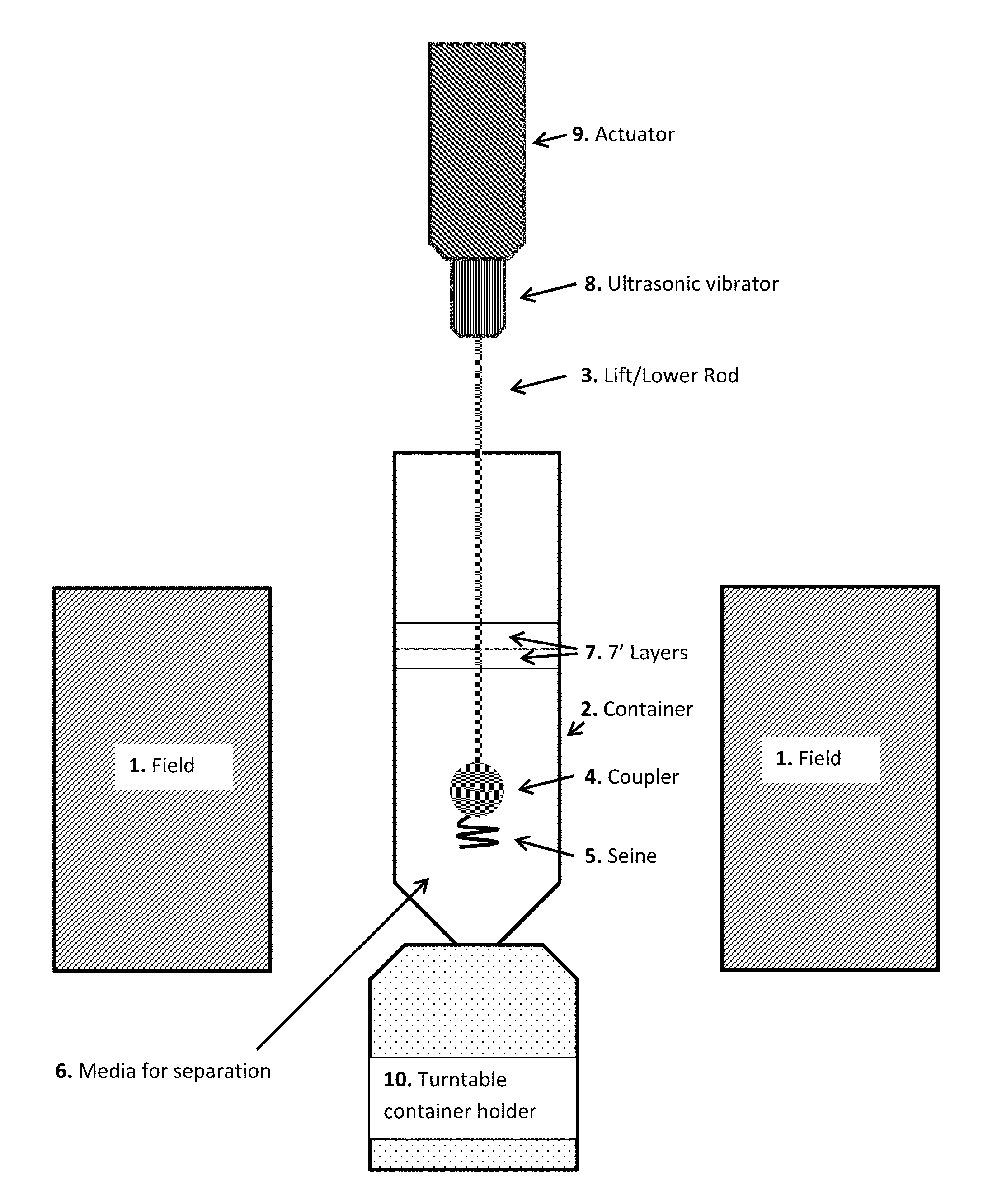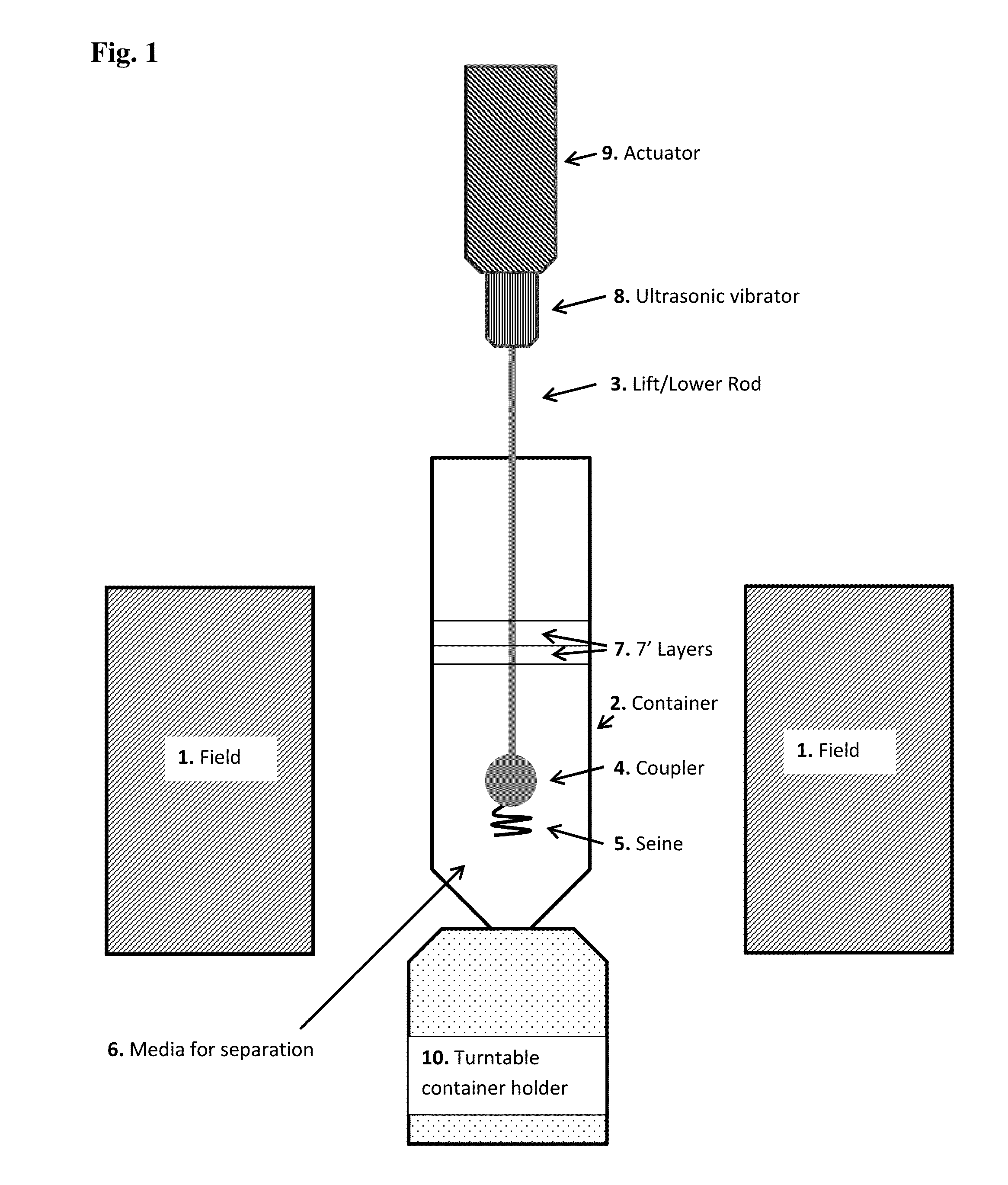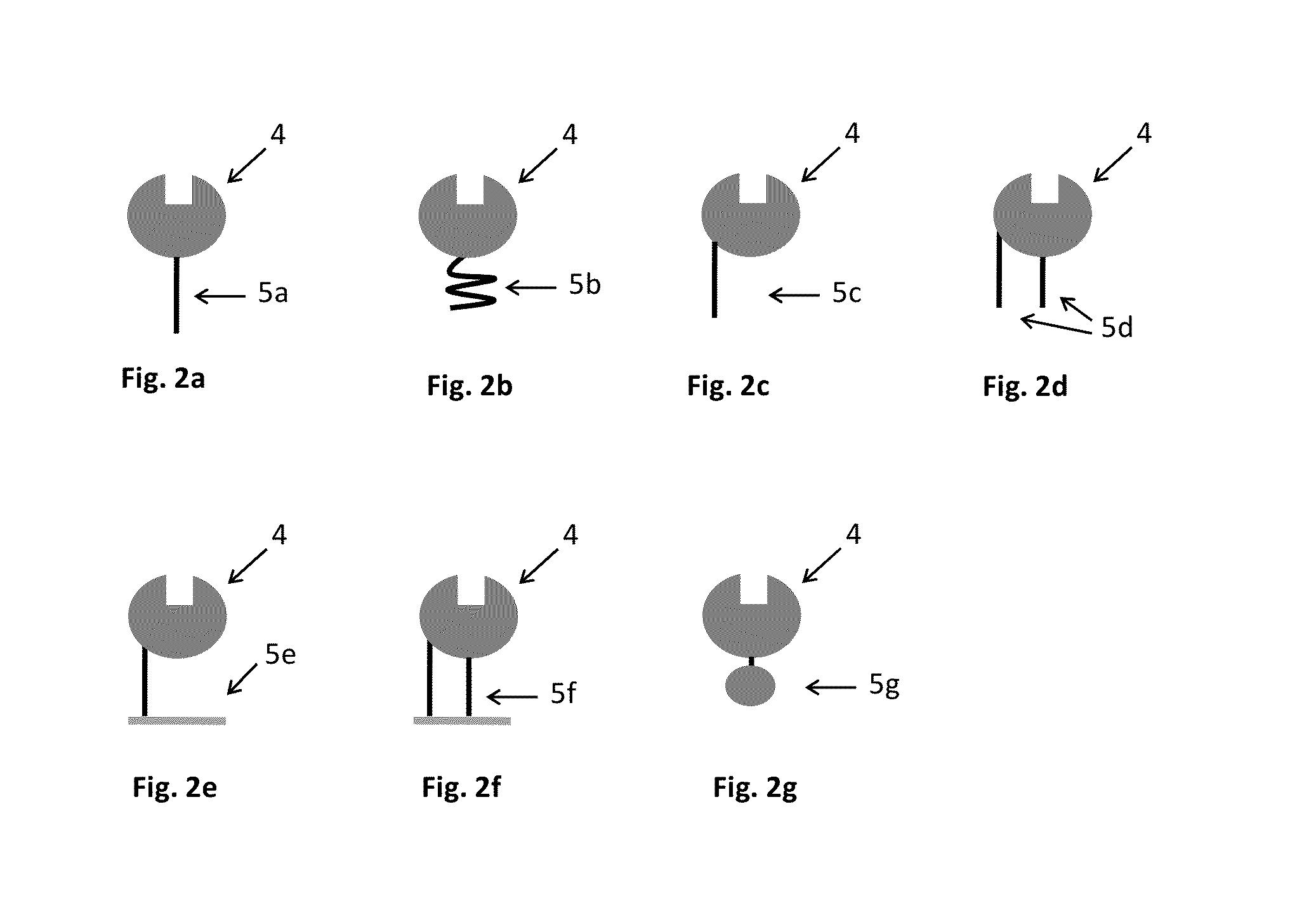Multi-parameter high gradient magnetic separator and methods of use thereof
- Summary
- Abstract
- Description
- Claims
- Application Information
AI Technical Summary
Benefits of technology
Problems solved by technology
Method used
Image
Examples
example 1
Construction of Simple Prototype, FF Removal and T Cell Capture
[0064]A sufficiently uniform magnetic field for inducing magnetic gradients on Seines was created by constructing dipole magnet from a “U” shaped yoke having soft steel sides of 4.0×4.5×0.5″ and a back plate that held the sides apart by 2.0″, wherein 3.0×2.5 by 0.5 inch block magnets (magnetized through the 0.5″ dimension) were affixed to the inside walls of the yoke in a North-South orientation, and separated by a gap distance of 1.0″. This arrangement creates a gap volume of 3×2.5×1″. 3.0×0.5×0.4 inch magnets (magnetized through the 0.4″ dimension) were placed adjacent to and in the same orientation on both vertical sides of the large block magnets in order to keep the field lines resulting from the magnetic circuit of the large block magnets from bulging out (and creating gradients); thus creating a substantial volume between the large block magnets where a ferromagnetic object could be moved into, out of and within t...
example 2
Preparation of Sienes Barrier Coatings that Modify Effective Induced Magnetic Gradients
[0068]There are instances where it is desirable to coat ferromagnetic rods used in constructing Seines just for the purpose of affording easy release of magnetically collected entities and materials for doing that have been cited. Alternatively where it is desirable to modulate the gradient of a Seine of some particular diameter Ferromagnetic rods, e.g. iron, nickel, used to create Sienes, such rods or structures can be encapsulated with micro-tubing that is nontoxic, non-pyrogenic and biocompatible, thereby in a virtual manner effectively increasing the diameter of the rod and thus lowering the gradient that captured entities experience at the Seine surface. This can readily be done with commercially available tubes (i.e. microprobe tubing) that is stiff enough for easy handling and soft enough to resist puncturing. The inner diameter of such tubes can be as small as 1 mm, or be made smaller by s...
PUM
 Login to View More
Login to View More Abstract
Description
Claims
Application Information
 Login to View More
Login to View More - R&D
- Intellectual Property
- Life Sciences
- Materials
- Tech Scout
- Unparalleled Data Quality
- Higher Quality Content
- 60% Fewer Hallucinations
Browse by: Latest US Patents, China's latest patents, Technical Efficacy Thesaurus, Application Domain, Technology Topic, Popular Technical Reports.
© 2025 PatSnap. All rights reserved.Legal|Privacy policy|Modern Slavery Act Transparency Statement|Sitemap|About US| Contact US: help@patsnap.com



